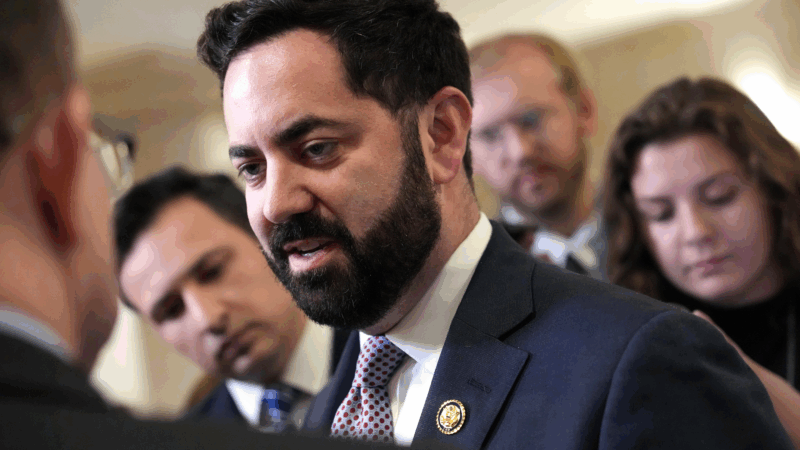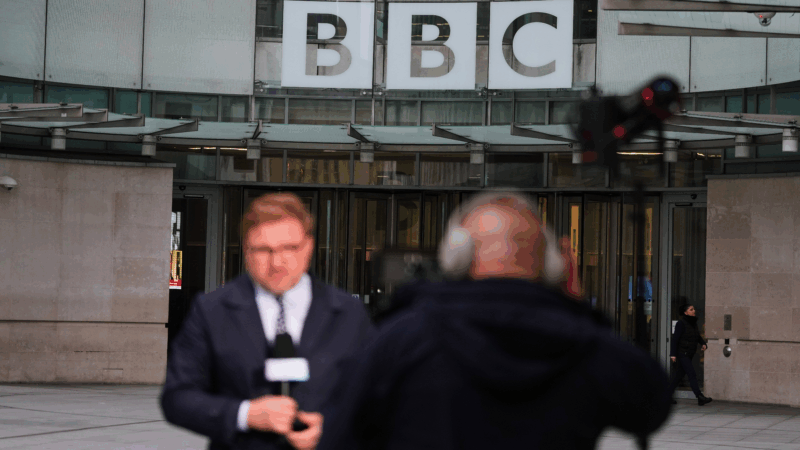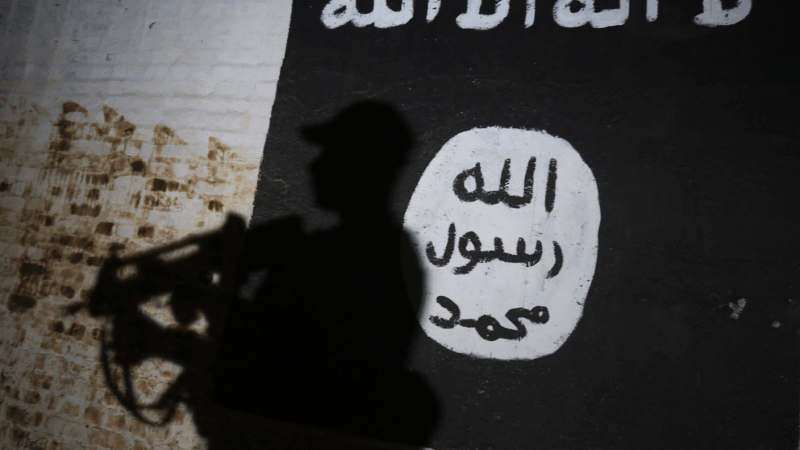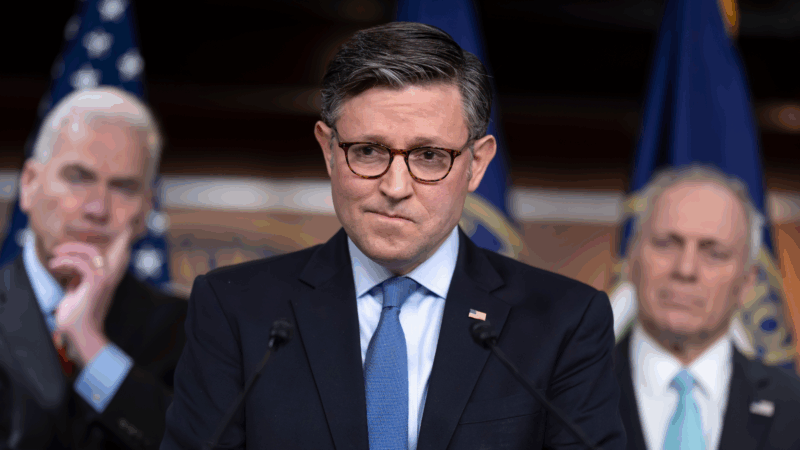Does the U.S. deserve the Statue of Liberty? Not anymore, one French politician says
A French politician facetiously asked the U.S. to return the Statue of Liberty, suggesting the country no longer lives up to the values the green-hued gift represents.
Raphaël Glucksmann, a member of the European Parliament with the Progressive Alliance of Socialists and Democrats, said at a party convention on Sunday that he had a message “to the Americans who have chosen to side with the tyrants … who fired researchers for demanding scientific freedom.”
“Give us back the Statue of Liberty,” he said with a smile as the crowd cheered. “We gave it to you as a gift, but apparently you despise it. So it will be just fine here at home.”
Lady Liberty — full name “Liberty Enlightening the World” — was conceptualized by French anti-slavery activist Édouard de Laboulaye in 1865 to honor the centennial of the U.S. Declaration of Independence and its friendship with France, whose support helped win the American Revolution.
After years of construction, shipping and assembly, the statue was officially unveiled in 1886 in New York Harbor, where its raised torch and inscribed words of welcome greeted the millions of immigrants who arrived at Ellis Island in the late 19th and early 20th centuries.
It has endured as a global symbol of freedom, patriotism and democracy — and the lack thereof — in the decades since.
“Ordinary people, from American suffragists in the 1800s and 1900s to Chinese students in the 1980s, have raised up the Statue’s likeness to call for greater equality, an end to injustice, and more enlightened societies,” says the National Park Service (NPS), which maintains the site.
Glucksmann’s comments come at a time when the U.S. has been criticized at home and abroad for abandoning some of those commitments, including by cracking down on immigration and alienating European allies. Glucksmann has been a vocal critic of President Trump’s decision to temporarily suspend aid to Ukraine as it defends itself from Russia.
When asked about Glucksmann’s request — which he has since confirmed was symbolic — at a Monday briefing, White House press secretary Karoline Leavitt said, “Absolutely not.”
“And my advice to that unnamed, low-level French politician would be to remind them that it’s only because of the United States of America that the French are not speaking German right now, so they should be very grateful to our great country,” Leavitt added — an apparent reference to the U.S. role, alongside other allied nations, in liberating France from Nazi occupation in World War II.
No one is actually taking the statue back
Glucksmann responded in a 10-part thread on X addressed to the American people, acknowledging, “I would simply not be here if hundreds of thousands of young Americans had not landed on our beaches in Normandy.”
But, he said, that was a different version of America — one that “fought against tyrants, it did not flatter them;” one that “welcomed the persecuted and didn’t target them.”
“It was far, so far from what your current President does, says, and embodies,” he wrote.
He specifically cited the Trump administration’s “betrayal of Ukraine and Europe,” as well as its treatment of scientists. Notably: One French university recently launched an initiative to welcome American scientists whose work is untenable due to the administration’s research cuts.
Glucksmann said his comments were meant as “a wake up call.”
“No one, of course, will come and steal the Statue of Liberty,” he wrote. “The statue is yours. But what it embodies belongs to everyone. And if the free world no longer interests your government, then we will take up the torch, here in Europe.”
The Statue of Liberty would be hard for France to recall, since it is owned by the U.S. government, according to UNESCO. It’s also a national monument and major tourist attraction, drawing 3 million visitors in 2023 alone.
The U.S. had to work for the gift

While the Statue of Liberty was a gift, its creators believed the project should be a joint effort: The French paid for the statue, while the U.S. paid for its pedestal.
That involved a massive fundraising effort in both countries, through advertising, public events and souvenir sales.
“Though wealthy individuals did contribute, it was the small donations of hundreds of thousands of working people and children on both sides of the Atlantic that made the Statue of Liberty a reality,” the NPS says.
French sculptor Frédéric-Auguste Bartholdi led the design and construction of the statue’s copper components — from crown to gown — over several years, while working with American architect Richard Morris Hunt to design the 154-foot pedestal.
The 151-foot statue was assembled in France by 1884 and presented to the U.S. minister to France that same year. Then came the challenge of actually bringing it stateside.
Bartholdi had selected Bedloe’s Island — now called Liberty Island — in New York as the site for the statue, since it was visible to every ship entering New York Harbor. But to get there, the statue had to be disassembled into 350 pieces, transported on a French navy ship and reassembled — by a construction crew largely made up of new immigrants, according to the NPS.
The statue was finally unveiled on a rainy day in October 1886, as 1 million New Yorkers watched and cheered.
“When it was time for Bartholdi to release the tricolor French flag that veiled Liberty’s face, a roar of guns, whistles, and applause sounded,” the NPS says.
A bronze plaque inscribed with “The New Colossus” — a poem by Jewish-American poet and activist Emma Lazarus — was added to the pedestal in 1903, memorializing the famous phrase: “Give me your tired, your poor, your huddled masses yearning to breathe free.”
The statue’s symbolism and likeness have stretched far beyond New York in the years since. Replicas can be found around the world, and have even been traded by the U.S. and France.
French people living in the U.S. sent a replica to their homeland in 1889 for the 100th anniversary of the French Revolution. The statue was placed on an artificial island in the River Seine in Paris, originally facing the French presidential palace. It turned to face its American sister in New York in 1937.
Decades later, in 2021, France sent a second, smaller replica of the statue — at just 9 feet tall — to the U.S. on a 10-year loan as a reminder of the friendship and shared values between the two countries. “Little Lady Liberty” briefly joined her big sister in New York before heading to Washington, D.C., where she is on display outside the residence of the French ambassador.
Greetings from Chiloé Island, Chile, where the fast-moving tides are part of local lore
Far-Flung Postcards is a weekly series in which NPR's international team shares moments from their lives and work around the world.
GOP House Rep. says it’s ‘unacceptable’ to allow ACA subsidies to expire
Rep. Mike Lawler says House Speaker Mike Johnson is correct in saying the health care system isn't working, but allowing ACA subsidies to expire without a plan to address rising costs is "idiotic."
The best movies and TV of 2025, picked for you by NPR critics
Whether you plan to head out to the theater or binge from the couch, our critics have gathered together their favorite films and TV shows of 2025.
Trump’s BBC lawsuit: A botched report, BritBox, and porn
President Trump's lawsuit alleges that the BBC's fall 2024 documentary was "a brazen attempt" to harm his re-election. The BBC has apologized but rejects his claim.
Recent attacks have been ‘inspired’ by Islamic State. What does that mean?
A decade ago, the self-proclaimed Islamic State group held vast swaths of territory across Iraq and Syria, but President Trump declared it destroyed in 2019.
How the long-running Obamacare fight came to thwart enhanced subsidies in Congress
Congress is poised to leave for a scheduled holiday recess without a solution for addressing the expiration of enhanced subsidies for Affordable Care Act marketplace plans.







